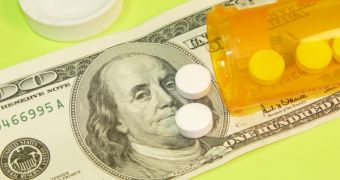Over the last decade, diabetes has become one of the most widespread diseases in the United States, and predictions say that, by 2050, the total number of Americans with the affliction will have soared from the current 11 million, to a whopping 29 million affected. The statistics show that, while the incidence of diabetes continued to rise, so did the prescription costs and the number of doctor visits.
According to a University of Chicago Hospitals survey, conducted by Caleb Alexander, M.D., M.S., "The annual economic burden of diabetes is estimated at $132 billion and increasing. In 2002, more than one-tenth of U.S. health care expenditures were attributable to diabetes." Drug producing companies are having some of the best days of their existence, with doctors prescribing more medications to more patients each day.
Indeed, the study shows that, since 1997, physicians have begun prescribing more and more drugs to each patient coming into their practice. The national average went up from 1.14 to 1.63 drugs per person. Also, the number of patients who only received one drug has decreased by half, from 82 percent to 47 percent, meaning that the number of those who buy prescription pills increased both from new patients, as well as by half of the old ones.
The average costs of medicines almost doubled themselves since 2001, reaching an average of $76 in 2007, versus the $56 level in 2001. The medication costs for the people suffering from diabetes, and type II diabetes especially, have risen from $6.7 billion in 2001 to $12.5 billion in 2007. The extra cash ended up in the pockets of large drug companies, where it is currently multiplying.
"We document large shifts in patterns of diabetes treatment and pharmaceutical expenditures across treatment classes. Whether increased treatment costs are balanced by improved outcomes associated with these changes cannot be evaluated in the absence of data comparing effectiveness and cost-effectiveness across treatment classes," the study authors concluded.

 14 DAY TRIAL //
14 DAY TRIAL //